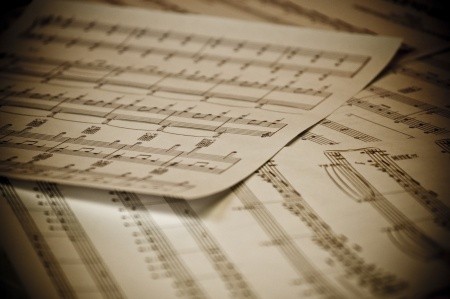
The Challenge
Most guitarists seem to have an inordinate amount of trouble when it comes to sight-reading standard notation. Considering that many guitarists are self-taught, this is totally understandable. But at the same time, if one wants to be a fully functional musician, the ability to read and communicate in standard musical notation is a must.
Here are some tips I’ve found that have helped many of my students become better sight-readers:
Start with really easy material!
One of the biggest problems guitarists face when learning to read is that they often begin with material that is way over their heads. You didn’t start out reading Tolstoy in the 1st Grade did you? No, it was more like Dr. Seuss! If you want to learn to read music, you need to take the same graded approach. It can be a bit of a blow to ones ego if you already have some technical ability and can play pretty complicated music by ear or from tab, but if you haven’t been reading standard notation daily, your sight-reading is probably nowhere near your actual playing ability. Don’t make your sight-reading practice an exercise in total frustration or you will most likely give up.
Instead, start with really easy material: Basic guitar method books are fine, but also get a wider variety of material, anything for treble clef instruments; clarinet, trumpet, saxophone, flute, violin, anything that says fundamental, elementary, beginner, etc. (look for music with lots of quarter-notes, half-notes and whole-notes at first!). Put on a metronome and just start reading through the first book in the stack in time (very important). Don’t stop, don’t go back and try to play a phrase over again, etc., just keep moving forward. If you can’t do it in time, you’re trying to read past your current level (that’s why it’s important to start with really simple material). When you hit the wall with a book (can’t keep up), just put a bookmark where you stopped, move that book to the bottom of the pile, and start with the next one. This is pretty intensive, so put on a timer and don’t try to do this for more than about 15-20 minutes at a time at first. More regular practice sessions of shorter duration are much more effective than longer less regular sessions (avoid “binge” practicing).
Reading Notes on a Single String
Write out a series of random half-notes over the length of a single string (but don’t use the open-string note). Then practice playing it in different keys (just leave room at the beginning of the line so that you can change the key signature). Do this at a slow-moderate tempo, while saying the names of the notes as you play them (or even slightly before).
Learn to Memorize Quickly!
Sometimes people think reading is the opposite of memorizing music, but really they’re two sides of the same coin. Good readers can generally memorize and internalize the notes on the page very quickly (this is what makes them good readers). A great way to develop this is to take any music you want to read and follow this procedure:
- Without playing (or even touching your instrument), read two measures of music. In your mind, try to visualize where the notes are and what fingers you’re going to use to play them. Memorize it.
- Once you feel you’ve got it, turn the music stand around and play what you just saw. If you get stuck, don’t try to guess (no “hunting and pecking” for notes). If you don’t remember how something went, stop and repeat step #1.
- If you were able to play measures 1 and 2, proceed to measures 3 and 4 and repeat steps #1 and #2.
- After you’ve successfully completed measures 3 and 4, go back and repeat the process for the overlapping measures (measures 2 and 3).
- Continue through the entire piece in this manner.
- Go back to the beginning of the piece, and this time play from beginning to end on your instrument WHILE reading.
Reading Chords
Reading vertically stacked chords on the staff is often a problem area for guitarists and there are a couple ways to improve it.
- When reading vertically stacked chords, don’t start reading by putting one finger at a time on the notes. Instead, read the entire stack from bottom to top (or top to bottom) and visualize the entire shape of the chord on the fingerboard. Then put your fingers on the chord and play it.
- Make flash cards: Put a staff on the front of the card and a chord frame on the back. When learning a new piece of music, write the chords on the staff on the fronts of the cards and then fill in the chord frames on the backs. You carry the cards around in shirt pocket and periodically throughout the day pull them out. Then randomly read the read the front of a card and try to visualize the chord. Check yourself by looking at back of the card. After awhile you’ll find that your “mind’s eye” will start to “see” the shapes of chords on the fingerboard when you look at them on the staff.
I hope you find these tips useful. I’ve been playing guitar for almost a half-century and teaching it for about 37 year, and these methods really work. If used daily, they will help you to become a better reader!
